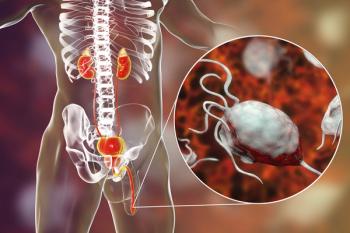
Robotic Surgery On Par With Non-Robotic Surgery for Prostate Cancer
Robot-assisted and open radical surgeries for prostate cancer have similar outcomes for patients at 3 months, according to clinical trial results.
Robot-assisted and open radical surgeries for prostate cancer have similar outcomes for patients at 3 months, according to clinical trial results
Patients who underwent robotic surgery or open surgery had similar quality-of-life outcomes at 3 months, including sexual and urinary function. These results are the initial results of a 2-year follow-up of patients on the trial.
The trial, conducted at the Royal Brisbane and Women’s Hospital in Brisbane, Australia, is the first randomized controlled trial to directly compare outcomes of robotic and open surgery for prostate cancer. Longer-term follow-up of patients is ongoing to assess cancer survival and to continue to follow the patients for quality-of-life measures.
Robert ‘Frank’ Gardiner, MD, of the University of Queensland Centre for Clinical Research in Brisbane, Australia, and colleagues randomized patients with newly diagnosed prostate cancer who had chosen to undergo surgery 1:1 to robot-assisted laparoscopic prostatectomy or open radical retropubic prostatectomy. A total of 157 patients had robot-assisted surgery and 151 underwent open surgery.
Urinary function was not different between the two surgical groups. At 6 weeks after surgery, urinary function scores were 74.50 and 71.10 in the open and robotic surgery arms, respectively (P = .09). At 12 weeks, urinary function scores were 83.80 and 82.50, respectively (P = .48).
Sexual function scores were also similar between the two surgical groups: at 12 weeks, the scores were 35.00 and 38.90 in the open and robotic surgery arms, respectively (P = .18).
Robot-assisted laparoscopic prostatectomy was first used in 2000 for men with prostate cancer. Surgery is the most common intervention for localized disease, and involves removal of the prostate gland. According to the study authors, about 80% of all prostatectomies in the United States are robot-assisted laparoscopic surgeries. The numbers in Europe are fewer but growing. This type of robotic surgery is also now used for gynecologic, cardiothoracic, and head and neck surgeries.
The proportion of patients with positive surgical margins was 10% and 15% in the open and robotic surgery arms, respectively. The authors were not able to demonstrate whether these proportions were similar between the two groups based on a 90% confidence interval with a delta of 10%. A superiority test showed that the two proportions were not significantly different (P = .21).
Postoperative complications occurred in 14 and 6 patients in the open and robotic surgery arms, respectively (P = .052). A total of 12 patients (8%) in the open surgery arm and 3 patients (2%) in the robotic surgery arm had intraoperative adverse events.
“Patients are now being followed up for a total of 2 years in order to fully assess the longer-term outcomes, including on cancer survival,” said Gardiner in a statement. “In the meantime, patients should choose an experienced surgeon they trust and with whom they have a rapport, rather than basing their decision on a specific surgical approach.”
Newsletter
Stay up to date on recent advances in the multidisciplinary approach to cancer.

















































































